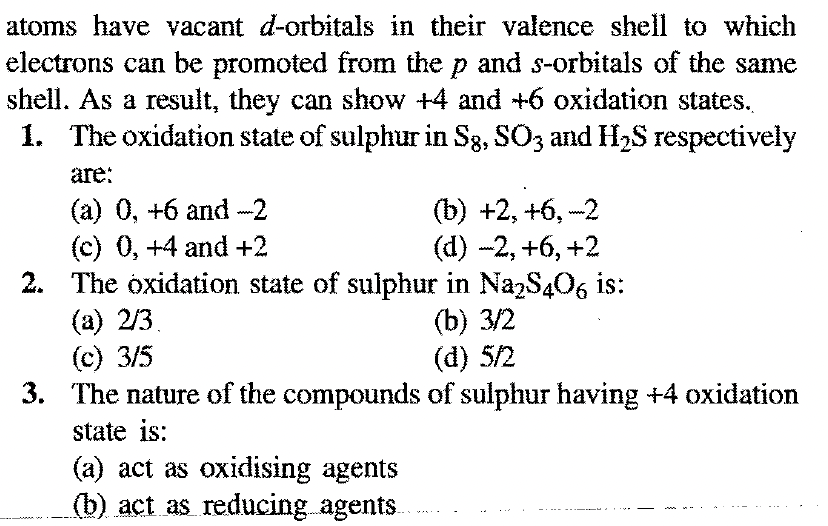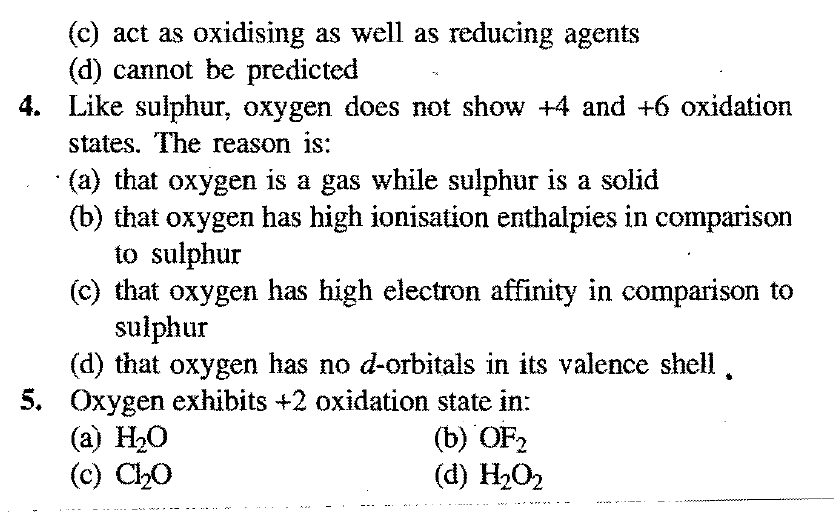Group 16 -3
Answers (1)
1: (a) - 0, +6 and -2
In S₈, sulfur atoms share electrons with each other resulting in an oxidation state of 0. In SO₃, sulfur has shared its electrons with oxygen atoms to achieve a +6 oxidation state. In H₂S, sulfur has lost electrons to hydrogen, resulting in a -2 oxidation state.
2: (a) - 2/3
In Na₂SO₄, there are two Na⁺ cations and one SO₄²⁻ anion. To maintain electrical neutrality, the oxidation state of sulfur in the sulfate ion (SO₄²⁻) is +6. The average oxidation state of sulfur in Na₂SO₄ is then calculated by dividing the total charge of sulfur (+6) by the number of sulfur atoms (1), resulting in +6. Since there are 2 Na⁺ cations with a charge of +1 each, we need a combined charge of +2 to balance the sulfate ion. This is achieved by dividing +6 (oxidation state of sulfur) by 3 (number of Na atoms), giving an average oxidation state of sulfur in Na₂SO₄ as 2/3.
3: (c) - act as oxidising as well as reducing agents
Sulphur oxidation state can vary from -2 to +6. In the given compound, the oxidation state of Sulphur is +4, It can be reduced to -2 or get oxidized to +6. So, Sulphur can act as oxidizing as well as reducing agents.
4: (d) - No d-orbitals in its valence shell
Oxygen's electronic configuration limits its ability to achieve +4 and +6 oxidation states. While the physical state (gas vs. solid) doesn't play a role, oxygen's high electron affinity and lack of d-orbitals in its valence shell contribute to this limitation.
5: (a) - H₂O
In H₂O, oxygen shares its electrons with hydrogen atoms, resulting in an oxidation state of -2.




